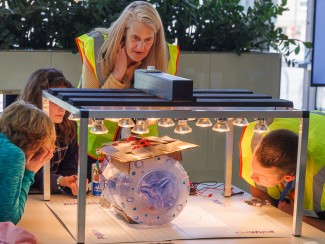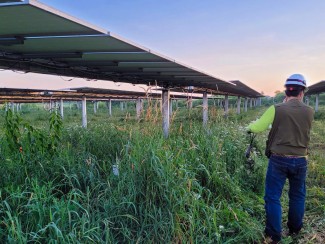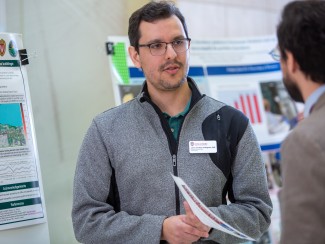Last month, President Barack Obama unveiled a Climate Action Plan to cut carbon pollution and slow the effects of climate change. Wisconsin Energy Institute Director of Midwest Energy Policy Analysis Gary Radloff shares his insights about what the plan contains and how it might affect change.
Q: What are the key points of the new plan?
Overall, the plan includes a federal agency focus on climate mitigation and climate adaptation. This is very much an insiders’ game strategy that uses the administrative authority of the President and his cabinet level agencies to implement policies, programs and action in a wide variety of areas:
- Renewable energy market pull: Having the Department of Defense (DOD) continue to invest in renewable energy solutions can have a large impact on creating markets for tools like microgrids to advance distributed energy. As DOD deploys more of these solutions and invests in the technology, more market opportunities emerge and more innovation can occur.
- U.S. Environmental Protection Agency (EPA) regulating greenhouse gas emissions at existing electrical energy sites: The key with this proposal will be in the details of what EPA decides to do with the regulation. Overall it is a very significant step toward transitioning away from legacy coal plants to cleaner fuels.
- Climate adaptation strategies: Already, local governments have to spend millions of dollars dealing with extreme weather events like flooding, drought, tornados and hurricanes related to a changing climate. The federal government is now acknowledging this challenge and providing targeted funding to assist.
Q: What does this mean for the majority of U.S. citizens?
The immediate impacts may not be all that visible, but over time citizens will see changes in local, state and federal policy in the areas of climate mitigation and climate adaptation.
Q: What does it mean for Wisconsin?
Wisconsin is a very large baseload coal generation electric utility state. We will need to develop a strategy for cleaner energy solutions to replace some or all of this coal energy generation.
Q: How soon could we start seeing pieces of the “blueprint” coming into action? Would any of these plans be subject to government review and/or approval?
Most of the President’s plan is federal agency driven and should not require formal review or approval. Still, much of the responsibility to regulate investor-owned utilities falls on state regulation. Therefore, state solutions will need to be developed.
Q: How, exactly, would this plan create jobs?
Proposing that a legacy industry, in this case large coal plants, move toward change with clean energy technology solutions will require new products, services, ideas and businesses. These new business solutions will result in job creation. One could argue it may be more of a job transfer, as the legacy industry will change and some jobs may evolve or disappear. If implemented fully and completely, this regeneration of the energy sector should create many new jobs overall.





